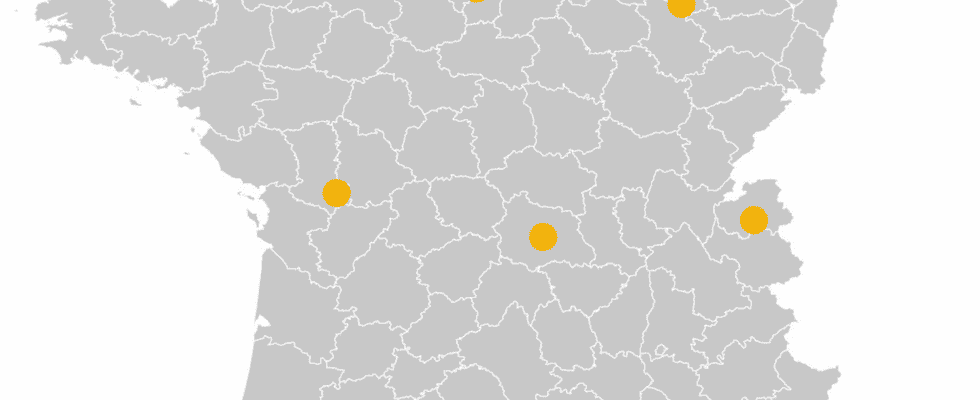While the demonstrations against the installation of mega-basins continue despite the ban in Sainte-Soline, in Deux-Sèvres, some fear the establishment of a new ZAD, an area to be defended. “More than a thousand gendarmes will remain while we make sure that no ZAD is not built”announced the Minister of the Interior, Gérald Darmanin, on Sunday October 30, claiming to act “at the request of the President of the Republic”.
>> Are there really eco-terrorists in France, as Gérald Darmanin suggests?
These famous areas to be defended (diversion of deferred development areas, territories pre-empted by local authorities for a major development project) have been brought to the fore by the long battle of Notre-Dame-des-Landes. Activists were opposed at the time to the airport project which was to be built on the outskirts of Nantes. Since then, many ZADs have been installed and then dismantled over the years. Today, according to our information, five ZADs are active in the territory.
“A ZAD is a hybrid occupation movement, with different political sensitivities” ranging from anarchists to decrements, details Sylvaine Bulle, researcher at the University of Paris in the Anthropologie du politique laboratory (CNRS-EHESS). “This movement takes place in two stages: a phase of direct action, punch” with the occupation of a territory, and “a second time of transformation social”, she explains. The model is obviously Notre-Dame-des-Landes, to which Sylvaine Bulle has devoted a book Irreducible. Survey of living environments. From Bure to Notre-Dame-des-Landes.
The ZAD in the Nantes suburbs “is the benchmark on all points” because “it has been an extremely durable form of occupation”, she assures. Other ZADs have developed over the past ten years: in Sivens where Rémi Fraisse was killed, in Besançon with the ZAD des Vaîtes, in Bure, which the researcher describes as “Sleeping ZAD” since officially evacuated but still active among opponents of the plan to bury radioactive waste.
“A ZAD is not concerned with democracy or public opinion. It does not seek to rally political parties or reformist NGOs.”
Sylvaine Bubbleat franceinfo
There is however a “time chasm” between Notre-Dame-des-Landes and the ZADs that are active today, such as the one that settled in La Clusaz against the creation of a water retention basin for snow cannons. The latest ZADs “those of the Gonesses [aujourd’hui évacuées]de Saclay are mainly land movements, there is not really life on the spot”describes Sylvaine Bulle, who sees “Stealth ZADs”. Differences also on the side of the sociology of the militants: the alternative, the radical ecologists seem to have replaced the anarchists, by copying their mode of action.
In this movement, the contestation of basins appears as an exception. “These are the same occupants, the same activists, the same processions and the same operational techniques as at the beginning of Notre-Dame-des-Landes”, according to the specialist. The very strong police response announced by the Minister of the Interior therefore does not surprise him. “A ZAD is above all a political movement to dismiss the established order, whether economic, judicial, political, it is a more or less symbolic force of dismissal”, she analyzes. So the government wants to keep control: “Gérald Darmanin talks about terror, he tries to separate that from ecology by using strong words.”
